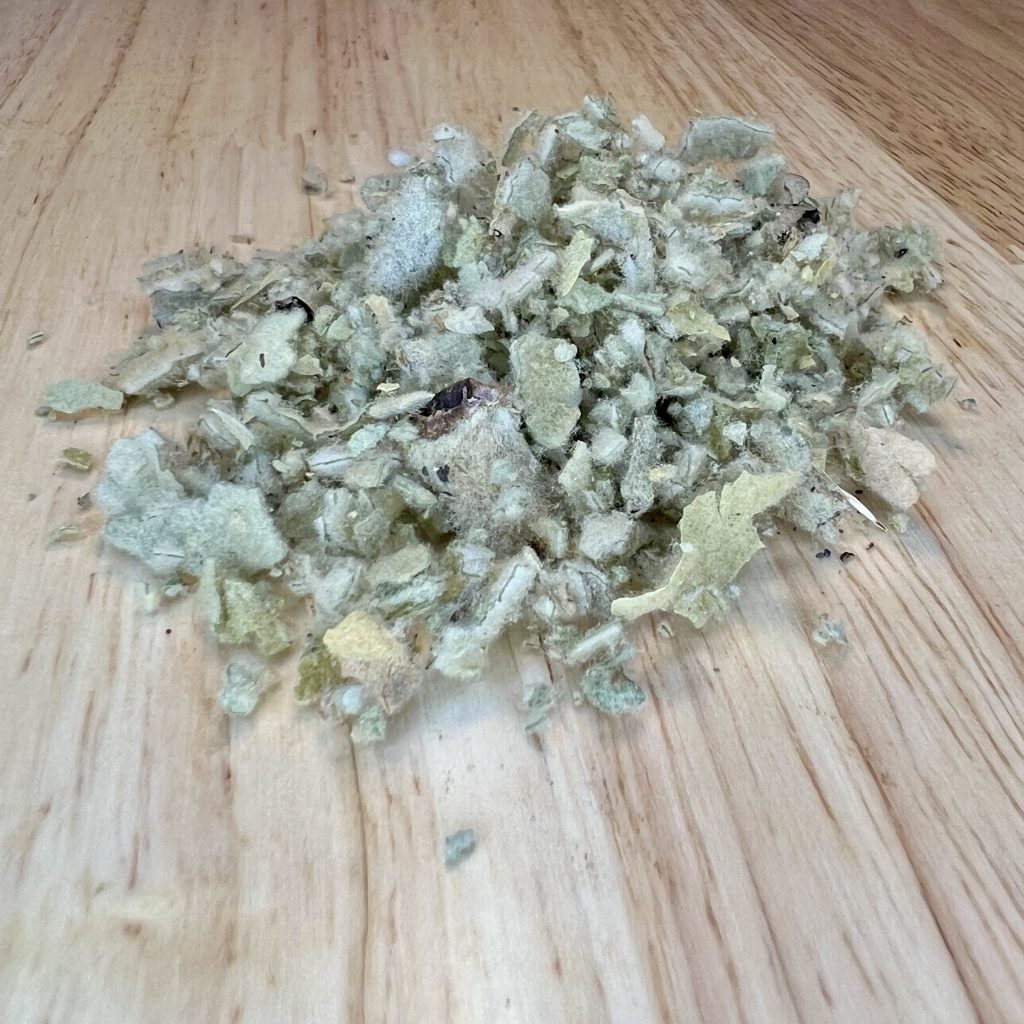Medicinal Action

Lung tonic
Lung tonics are used to enhance the vitality of the respiratory system, supporting the lungs’ ability to process oxygen efficiently, clear mucus, and resist irritants or infections. These tonics may be employed for chronic conditions, recovery from respiratory illness, or general maintenance of respiratory health. Herbal examples include mullein (Verbascum thapsus), elecampane (Inula helenium), and licorice root (Glycyrrhiza glabra). Lung tonics are particularly useful in soothing inflamed tissues, improving oxygenation, and addressing long-term lung support.

Products containing Lung tonic
Discover our collection of artisanal salves for holistic healing.
Energy Elevate- Cordyceps Tincture
Sustain Energy, Build Resilience – A Vitality-Boosting Blend for Performance and Endurance. Fuel your day with this expertly crafted formula designed for lasting energy.
Size 1oz
Monographs with the (Lung tonic) function
Eleuthero (Eleutherococcus senticosus)
In traditional Chinese medicine (TCM), Eleuthero has been used for over 2,000 years to fortify Qi and support the Spleen and Kidney meridians. It was traditionally used to increase stamina, combat fatigue, and strengthen the immune system, especially during recovery from illness. In Russia, Eleuthero gained prominence during the Soviet era for its ability to enhance athletic performance, mental clarity, and stress resilience.
Current Uses:
Today, Eleuthero is widely used as an adaptogen, helping the body adapt to stress and improve endurance and energy. It is commonly used for:
- Increasing energy and stamina during periods of fatigue or physical exertion
- Supporting immune function, particularly in times of stress or recovery
- Balancing stress responses, promoting mental clarity and focus
- Enhancing athletic performance and aiding in post-exercise recovery
- Improving overall vitality and resilience to environmental stressors
*To learn more about this plant’s traditional and modern uses, energetics, and potential contraindications, visit our Materia Medica section and search for this herb by name. There, you’ll find detailed notes on safe use and preparation methods.
Ashwagandha Root
A deeply restorative adaptogen, Ashwagandha Root (Withania somnifera) has been treasured in Ayurvedic tradition for centuries for its ability to strengthen resilience and restore balance. Known as a “rasayana” or rejuvenative tonic, it supports the body’s natural capacity to adapt to life’s daily stressors and maintain equilibrium across the nervous, endocrine, and immune systems.
This tincture offers a stabilizing, grounding energy — not stimulating, but harmonizing. It helps moderate the body’s stress response, nourishing depleted reserves and supporting healthy adrenal function over time.
Crafted through a 60% organic cane ethanol extraction to preserve its full spectrum of constituents, this formula embodies the adaptogenic principle described by herbalist David Winston: to normalize rather than force, to strengthen rather than overstimulate, and to build vitality that endures.
Like the resilient root itself, Ashwagandha invites you to slow your rhythm, find your center, and cultivate calm strength from within.
Dosage
Take 2–4 mL (approximately 40–80 drops) up to three times daily in a small amount of water or directly on the tongue.
Best taken consistently over time for cumulative benefit, particularly during periods of emotional strain, fatigue, or high output.
Pairs well with restorative practices such as breathwork, yoga nidra, journaling, or quiet moments in nature.
Cautions
Generally well-tolerated. Consult a qualified healthcare provider before use if you are:
-
Pregnant or nursing
-
Sensitive to plants in the nightshade (Solanaceae) family
-
Managing hemochromatosis (excess iron) or hyperthyroid conditions
-
Taking sedatives or thyroid medications
Discontinue use if any adverse effects occur.
Mullein Leaf (Verbascum thapsus)
Historical Use:
Mullein has a long history of use in European folk medicine and among many Native American nations as a soothing herb for the lungs. The leaves and flowers were commonly brewed as a tea or smoked to ease coughs, bronchitis, and asthma. The plant’s soft, velvety leaves were applied as poultices to calm inflammation and promote healing of burns, wounds, and skin irritations. Mullein flowers were traditionally infused into oil to relieve earaches and reduce pain and swelling in the ear.
Current Uses:
Mullein remains a popular respiratory remedy. Its expectorant and demulcent properties help thin and move mucus, making coughs more productive and easing breathing during colds, bronchitis, and other congestive conditions. Teas, tinctures, and syrups are frequently used to soothe sore throats and support overall lung health.
Externally, mullein is applied in infused oils, poultices, and compresses to calm irritation, reduce inflammation, and assist with wound healing. Mullein flower oil continues to be a staple in ear drop preparations to ease ear discomfort and support a healthy inflammatory response.
Beyond respiratory and topical uses, mullein is sometimes used to soothe irritated mucous membranes in the digestive tract and gently support elimination when there is dryness or inflammation.
Learn More:
Want to explore more about energetics, history and more? Visit our Materia Medica section and search for this herb to deepen your understanding.



